
Contact

Home
H. J. McCooey part 2
Yowie / Bigfoot

McCooey: "the proofs I shall shortly bring forward will conclusively demonstrate that the Australian ape is something more than a
myth."
What proofs of the "Australian ape" did McCooey, now seemingly a regular contributor to "The Naturalist" section of theAustralian Town and Country Journal, present?
Nothing.
In fact, H. J. McCooey never again mentioned the Australian/indigenous
ape in print. So what happened?

HOW THE KANGAROO BREEDS.
Australian Town and Country Journal (NSW)
Date: January 5, 1884
Page Number: 23
...
lt is to be observed, however, that the young kangaroo, when first put into the pouch [by the mother], is incapable of sucking, but this difficulty is surmounted by a special and ingenious provision of nature, for the milk which it is incapable of sucking is forced down its throat by the peculiar action of the mother.
...


The egg (still contained in the evolutionary remnant of a shell, a few micrometres thick, and with only a small quantity of yolk within it) descends from the ovary into the uterus. There it is fertilised and quickly develops into a neonate. Even in the largest kangaroo (the red kangaroo) the neonate emerges after only 33 days. Usually, only one young is born at a time. It is blind, hairless, and only a few centimetres long; its hindlegs are mere stumps; it instead uses its more developed forelegs to climb its way through the thick fur on its mother's abdomen into the pouch, which takes about three to five minutes. Once in the pouch, it fastens onto one of the four teats and starts to feed. Almost immediately, the mother's sexual cycle starts again.

THE NATIVE CAT.
Australian Town and Country Journal (NSW)
Date: March 8, 1884
Page Number: 23
...
It never attacks an animal in any way proportionate to its own size, and is, in fact, physically incapable of killing an animal such as a half grown rabbit.
...

THE NATIVE CAT.
Australian Town and Country Journal (NSW)
Date: May 17, 1884
Page Number: 23
...
It is a matter of supreme indifference to me what opinion may be entertained as to my ability to discuss this subject of native cats by a set of chimney corner naturalists. By "chimney-corner naturalists," I mean men who sit in the chimney corner and greedily swallow everything that is told them without wishing to read for information or more particularly to search for practical proof or positive and relentless truth. Naturalists forsooth ! It is this class of naturalist that would have us believe that the death adder (Acantophis antarctica) has a "sting in its tail," that the platypus lays eggs like a hen, that the young of the kangaroo grow on the teats, and that a snake will live on till sundown, though never so effectually killed in the morning.
...

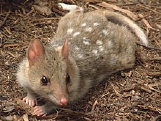
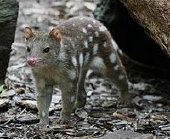


The eastern quoll (Dasyurus viverrinus)
The tiger quoll (Dasyurus maculatus), also known as (erroneously) the tiger cat
The quoll is mostly carnivorous; the smaller quolls primarily eat insects, birds, frogs, lizards and fruit; the larger species eat birds, reptiles, and mammals, including echidnas and possums. The tiger quoll's diet is dominated by mammals such as brushtail possums, rabbits and hares.

McCooey's Report Card:
Death adders do not have a sting in their tail
The platypus does not lay eggs
The young of the kangaroo do not grow on
the teat
Snakes do not wait until after sundown to die

When the platypus was first encountered by European naturalists, they were divided over whether the female laid eggs. This was not confirmed until 1884, when W. H. Caldwell was sent to Australia, where, after extensive searching assisted by a team of 150 Aborigines, he managed to discover a few eggs.



What is meant by "growing on the teat"? Kangaroo young are not born on the teat but they do grow on the teat.
See above.

Snakes are easily bruised and die when injured however because their body is elongated (long) , it can painfully take longer (up to several hours) before death occurs. It also does depend on the type of injury.


No snake has a sting in it's tail. Yet the belief (folklore) that it does is quite widespread.
June 7, 1884 - NATIVE CATS.
... In conclusion, I must add that it seems strange to me
that all the letters written in reply to Mr. M'Covey's first article upon the native cat, entirely disagreed with him ; and not one
lotter have I seen substantiating his ideas...
THE NATIVE CAT.
Australian Town and Country Journal (NSW)
Date: July 26, 1884
Page Number: 25
It is fortunate for those interested in Australian natural history that such gentlemen as Mr. Rotton and Mr. Peers cannot barricade the avenues that lead to scientific discovery and scientific truth. It is fortunate that they cannot stop or stamp out discoveries which clash with or disturb their pet notions and antiquated and long exploded theories. It is fortunate—extremely fortunate—for the happiness of keen, inquiring, restless mankind, that these gentlemen do not possess the keys that unlock the gates of the extensive and various domains of knowledge. The haughty tone and dignified sarcasm assumed and employed by these gentlemen will not, I assure them, silence or overawe me, for I dread not their sarcasm.
...

THE TIGER CAT.
Australian Town and Country Journal (NSW)
Date: May 31, 1884
Page Number: 23

THE RINGED SNAKE.
Australian Town and Country Journal (NSW)
Date: June 14, 1884
Page Number: 23

HOW THE PLATYPUS BREEDS.
Australian Town and Country Journal (NSW)
Date: August 2, 1884
Page Number: 33
...
It is sublimely and pre-eminently absurd of your correspondent to speak of an animal hatching its young from eggs and afterwards giving them suck.
...
There is not, and there never was on this earth, an oviparous mammal.
...

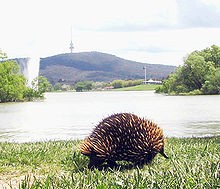

McCooey: "There is not, and there never was on this earth, an oviparous mammal."
The echidna is another mammal that lays eggs.
HOW THE NATIVE CAT BREEDS.
Australian Town and Country Journal (NSW)
Date: August 9, 1884
Page Number: 33
...
[COPY OF REPLY.]
"The Curator Australian Museum."
"Australian Museum,
"Sydney, July 14, 1884,
"Dear Sir, —You are quite right about the native cat. From six to eight are born and put in the pouch. Some four or five get attached to the teats, the others die and are thrown out. They are about the size of small kidney beans when born.—Yours truly,
" ED. P. RAMSAY, Curator."

THE BRUSH TURKEY, OR MALLEE HEN.
Australian Town and Country Journal (NSW)
Date: August 23, 1884
Page Number: 25

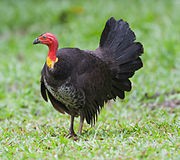

...
His reply in your issue of July 26 I have read with a feeling akin to disappointment,
his abuse of Messrs. Peer and Rotton being merely further illustrations of the lawyer having no case. Indeed the picture of Mr. M'Cooey
having unlocked the gates of knowledge, and excitedly gazing down the avenue of scientific discovery, and in the far distance viewing
a clucking hen in full persuit of a native cat, would be truly sublime, were it not slightly inaccurate.
...
THE RINGED SNAKE.
In
your issue of June 14 appears an article under the above heading in which the writer attempts to describe the ringed snake, and in
doing so he made quite an army of errors both as to size, locality, where formed, its abode, &c.
...
...
In your last issue Mr. M'Cooey takes for his sub- ject "The Brush Turkey or Mallee Hen." Now, these
are two distinct species of birds, the former being found in the northern and coast districts of this colony, and not anywhere in
the neighbourhood of the Bland, where the mallee hen or youngee is met with.
...
HOW THE NATIVE CAT BREEDS.
Australian Town and Country Journal (NSW)
Date: September 13, 1884
Page Number: 28

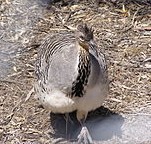

HOW THE PLATYPUS BREEDS.
Australian Town and Country Journal (NSW)
Date: September 20, 1884
Page Number: 19

It is no mere figure of speech to say that the eyes of the whole scientific world are now turned to and centred upon Mr. Caldwell. His announcement that the platypus is oviparous, and the interest that announcement has occasioned in the scientific world are evident. The cablegrams on this subject in the metropolitan dailies are contradictory, brief, and highly unsatisfactory ; but no doubt we shall soon have full particulars. Now is the time for those who pretend to a knowledge of this subject to speak out. The matter will soon be decided, and then every one will know. While this matter remains—as it now remains—in a state of uncertainty, I distinctly assert that the platypus is not oviparous. It brings forth its young alive. It does not lay eggs. It may be ova-viviparous, but I repeat that it is not oviparous. I admit that the announcement that the platypus is oviparous, coming as it does from one of the greatest embryologists of our day, has fallen upon me with cold and cruel force ; but we still want the proofs.
...
Mindful of the high cost per word, Caldwell famously but tersely wired London, "Monotremes oviparous, ovum meroblastic." That is, monotremes lay eggs, and the eggs are similar to those of reptiles in that only part of the egg divides as it develops.

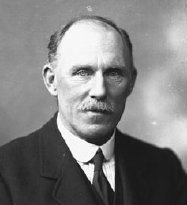
HOW THE NATIVE CAT BREEDS.
Australian Town and Country Journal (NSW)
Date: October 18, 1884
Page Number: 19

HOW MARSUPIALS BREED—ABORIGINAL NATURALISTS.
Australian Town and Country Journal (NSW)
Date: October 25, 1884
Page Number: 25

...
The Australian blackfellow is unquestionably a shrewd and keen observer, but he is not noted for truthful observa- tion.
...
About two years ago I held several long conversations with an intelligent blackfellow at Bateman's Bay on certain points of natural history on which at the time I was extremely anxious to obtain information. The names of many birds and mammals, with the interpretation he supplied me, I took down in shorthand, but in no instance have I used this information for the reasons above stated.
...
McCooey: "About two years ago I held several long conversations with an intelligent blackfellow at Bateman's Bay on certain points
of natural history on which at the time I was extremely anxious to obtain information."
This ties in with McCooey's "Australian
ape" claims in Bateman's Bay, 1882 (see previous page).
AUSTRALIAN APES.
Australian Town and Country Journal (Sydney, NSW)
Date: 24 November, 1883
Page Number: 25
IN your last issue, and under the head "The Naturalist," you publish a letter signed H. J. M'Covey, having reference to Australian or indigenous apes. Allow me to add my testimony to that of Mr. M'Covey, and to support his theory to the effect that there are indigenous apes in this colony, although rarely seen.
An animal resembling a human being, and covered with long hair, has several times been seen about four miles from here. News was brought in a short time ago, that it had been seen close to the township, and a party immediately started out in pursuit, and although they failed to see or hear anything of the animal, they discovered in the dust and other soft places in the bush, the impressions of what appeared to be human hands. One of Cobb and Co.'s mail coach drivers asserts, and that with the utmost pertinacity, that about two years ago, when at Cullen Bullen post office, 12 miles from here, he saw an animal exactly like a human being, and covered with long shaggy hair, cross the road in front of his coach, and leap the fence with the greatest of ease. It then disappeared in the darkness.
RICHARD BULKELEY.
Capertee, October 24.

18.02.2017







































